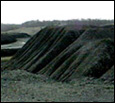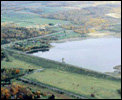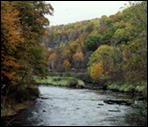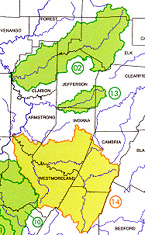Article 1, Section 27, Declaration of Rights of the Constitution of Pennsylvania amended.
U.S. passes The Clean Water Act.
 1977
1977
September 11, terrorists attack United States by destroying the twin towers of the World Trade Center in New York City and seriously damaging the Pentagon in Washington, D.C. Over 5,000 innocent people were killed.


Woodcock Reservoir in French Creek basin is last reservoir built by Corps of Engineers in the Allegheny Watershed in accordance with the 1912 Flood Commission Report.

OPEC's oil embargo of the mid-1970's dramatically increased permitting for surface coal mining in the Kiski-Conemaugh basin. Not since WWII had the demand for domestic energy supplies been so high. Since then, permitting has dropped to about 35-45 permits/year and has been at that level for almost ten years.
Previously declared "biologically dead" by the Corps of Engineers, the Kiskiminetas-Conemaugh Rivers show signs of aquatic life after more than a 140 years of intense industrial pollution.

87 miles of Allegheny River enter National Wild and Scenic Program.

Pittsburgh drinking water places third in national taste-testing competition. Shortly afterwards, requests come in from several out-of-state microbreweries.

Pittsburgh Voyager, an on-river environmental education organization, begins a teaching facility in a retrofitted Navy patrol boat.

52 miles of Clarion River enter National Wild and Scenic River Program.

Allegheny Watershed Network is founded to serve as an information clearinghouse and network hub for issues and organizations within the Allegheny Watershed.

Scrubgrass Creek awarded
first River Conservation planning grant in the Allegheny Watershed.
USGS implements NAWQA (National Water Quality Assessment) on the Allegheny River (part of the Upper Ohio River Drainage Basin).

Clarion River, Mahoning Creek, and Kiskiminetas-Conemaugh Rivers are awarded River Conservation Planning grants from the state. Planners and citizens take a watershed-wide approach to conservation.
River volume at Natrona Heights, March: 40,000 cfs (cubic feet/second). September: 7,000 cfs. Mean annual discharge at the mouth of Allegheny: 20,000 cfs, or 624 tons of water every second.

Watershed Atlas of the Allegheny River is published on the Internet, May 10.

The Monongahela River Watershed is added to the Watershed Atlas on November 15.